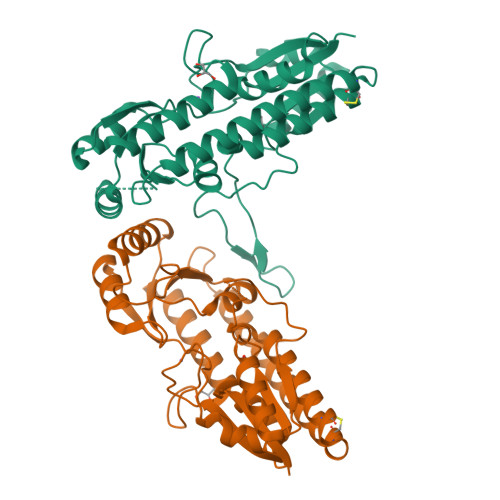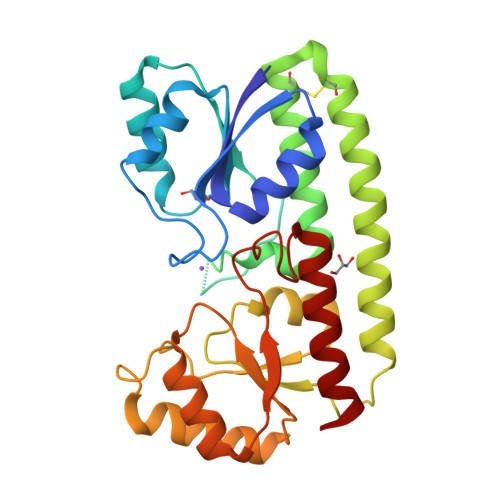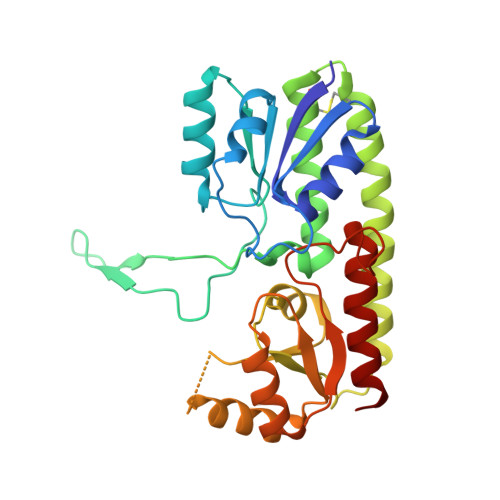Mechanisms of zinc binding to the solute-binding protein AztC and transfer from the metallochaperone AztD.
Neupane, D.P., Avalos, D., Fullam, S., Roychowdhury, H., Yukl, E.T.(2017) J Biological Chem 292: 17496-17505
- PubMed: 28887302
- DOI: https://doi.org/10.1074/jbc.M117.804799
- Primary Citation of Related Structures:
5KZJ, 5W56, 5W57 - PubMed Abstract:
Bacteria can acquire the essential metal zinc from extremely zinc-limited environments by using ATP-binding cassette (ABC) transporters. These transporters are critical virulence factors, relying on specific and high-affinity binding of zinc by a periplasmic solute-binding protein (SBP). As such, the mechanisms of zinc binding and release among bacterial SBPs are of considerable interest as antibacterial drug targets. Zinc SBPs are characterized by a flexible loop near the high-affinity zinc-binding site. The function of this structure is not always clear, and its flexibility has thus far prevented structural characterization by X-ray crystallography. Here, we present intact structures for the zinc-specific SBP AztC from the bacterium Paracoccus denitrificans in the zinc-bound and apo-states. A comparison of these structures revealed that zinc loss prompts significant structural rearrangements, mediated by the formation of a sodium-binding site in the apo-structure. We further show that the AztC flexible loop has no impact on zinc-binding affinity, stoichiometry, or protein structure, yet is essential for zinc transfer from the metallochaperone AztD. We also found that 3 His residues in the loop appear to temporarily coordinate zinc and then convey it to the high-affinity binding site. Thus, mutation of any of these residues to Ala abrogated zinc transfer from AztD. Our structural and mechanistic findings conclusively identify a role for the AztC flexible loop in zinc acquisition from the metallochaperone AztD, yielding critical insights into metal binding by AztC from both solution and AztD. These proteins are highly conserved in human pathogens, making this work potentially useful for the development of novel antibiotics.
Organizational Affiliation:
From the Department of Chemistry and Biochemistry, New Mexico State University, Las Cruces, New Mexico 88003.



















